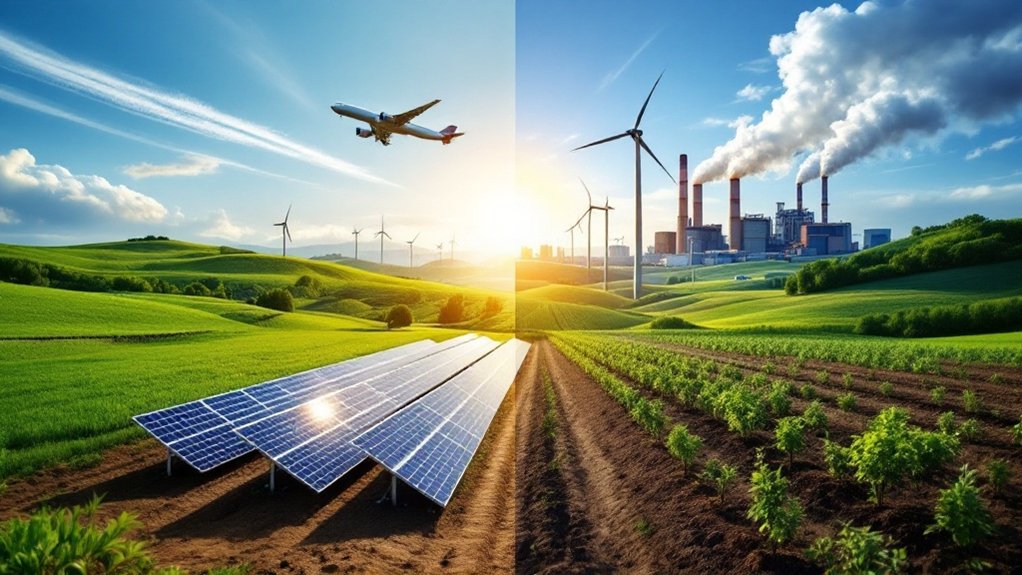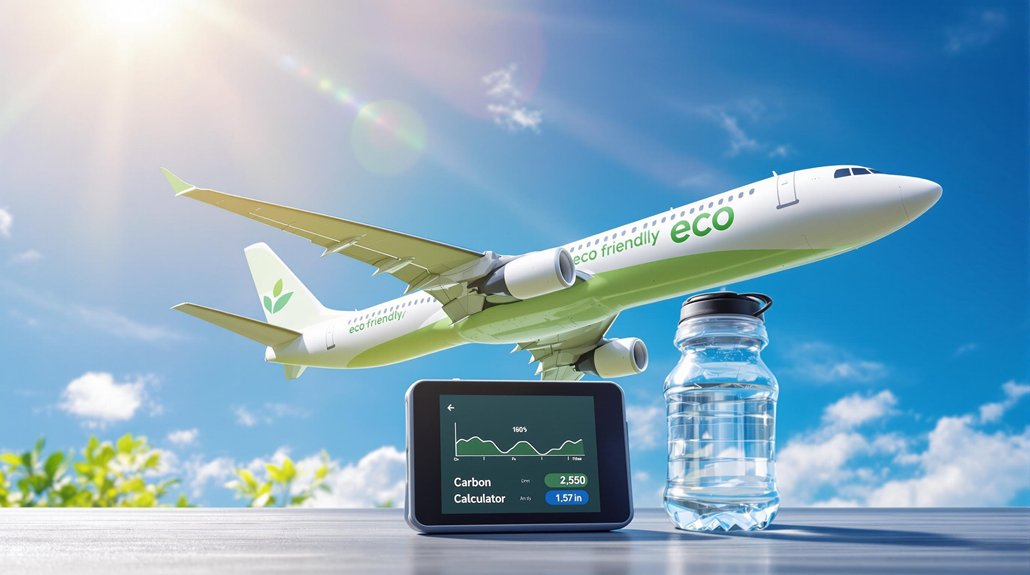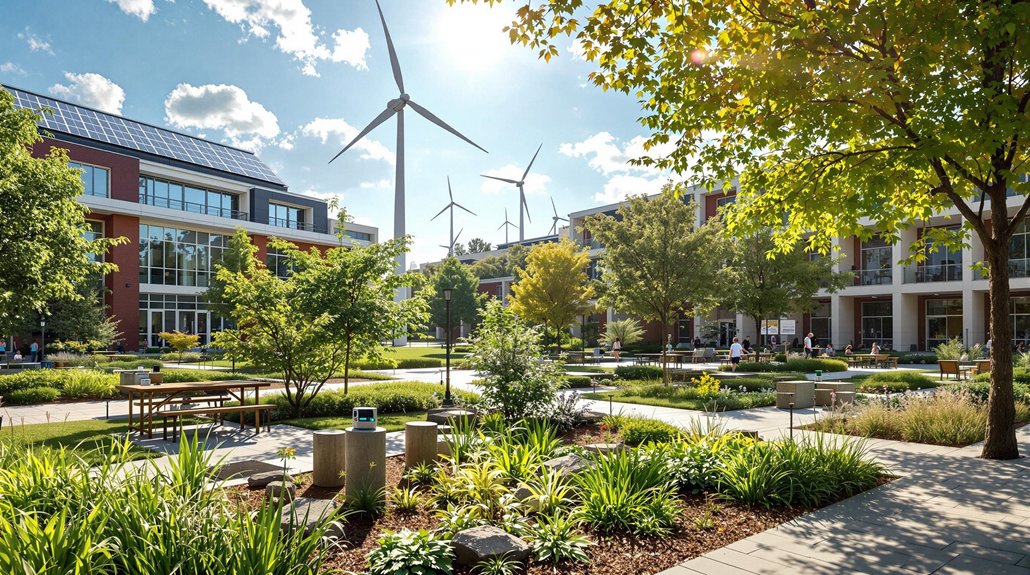Personal carbon offsetting allows individuals to compensate for their unavoidable emissions by supporting projects that reduce greenhouse gases elsewhere. People can calculate their carbon footprint (averaging 16 tons annually for U.S. residents) and purchase offsets priced between $3-$50 per ton. While offsetting supports renewable energy, reforestation, and other climate initiatives, critics point to verification challenges and suggest combining offsets with direct emissions reductions for maximum impact.

How can individuals take action against climate change? One approach gaining popularity is personal carbon offsetting. This practice allows people to compensate for their unavoidable carbon emissions by funding projects that reduce greenhouse gases elsewhere. Carbon offsets are measured in metric tons of carbon dioxide equivalent (CO2e) and serve as a voluntary way to balance one’s carbon footprint.
The first step in carbon offsetting is calculating a personal carbon footprint. Online calculators help people estimate their emissions from transportation, home energy use, and diet. The average U.S. resident emits about 16 tons of CO2e annually, while the global average is just 4 tons per person. This calculation provides a baseline for offsetting needs.
Various types of projects generate carbon offsets. These include renewable energy development like wind and solar farms, reforestation efforts that capture carbon, methane capture from landfills, energy efficiency improvements, and clean cookstove distribution in developing countries. Nature-based projects like reforestation are particularly valuable as they address both climate change and biodiversity concerns simultaneously. The carbon offsetting landscape has evolved significantly to include a more diverse portfolio of projects beyond just tree planting.
Purchasing offsets is relatively straightforward. Individuals can buy them through brokers, nonprofits, or directly from companies. Prices typically range from $3 to $50 per ton of CO2e. Some airlines and travel companies now offer built-in offset options for consumers. These offsets can be part of a comprehensive decarbonization strategy for environmentally conscious individuals.
Not all carbon offsets are created equal. Quality offsets meet specific criteria: they fund projects that wouldn’t happen otherwise, guarantee emissions reductions are permanent, use third-party verification, aren’t counted twice, and don’t cause emissions to increase elsewhere.
Critics point out limitations of carbon offsetting. Some view it as “permission to pollute” rather than changing behavior. There are challenges in verifying long-term impacts, risks of fraudulent claims, and concerns that offsetting doesn’t address the root causes of emissions.
Many experts suggest that offsetting works best as part of a broader approach. Reducing direct emissions through lifestyle changes remains important. Carbon offsetting can then help balance emissions that can’t be eliminated, contributing to climate change solutions.
Frequently Asked Questions
How Reliable Are Carbon Offset Certifications?
Carbon offset certifications vary in reliability. Major standards like Verra and Gold Standard require third-party verification, but challenges exist.
Issues include over-crediting, questionable additionality, and permanence risks, especially in forestry projects. The industry’s lack of standardization can lead to double-counting.
Improvements are underway through stricter testing, better monitoring technology, and increased transparency, but buyers should research certification credibility before purchasing offsets.
Can Offsetting Replace Reducing My Carbon Footprint?
Carbon offsetting can’t replace reducing emissions. Experts say it should be a last step, not the first approach.
The Science Based Targets initiative emphasizes direct emission cuts as the priority. While offsetting helps with unavoidable emissions, it doesn’t address the root cause of climate change.
Environmental groups warn that relying solely on offsets creates a “moral hazard” where people don’t change their carbon-intensive behaviors.
What Percentage of My Income Should Go to Carbon Offsets?
Financial experts suggest 1-2% of income for carbon offsets, with some recommending up to 5% for higher earners.
There’s no universal standard, however. Costs vary based on an individual’s carbon footprint and the quality of offset projects, which typically range from $3-$15 per ton of CO2.
Some people prefer alternative approaches like fixed monthly amounts or offsetting specific activities instead of using income percentages.
How Do I Verify Carbon Offset Projects Actually Work?
Carbon offset verification relies on third-party auditors who check if projects meet established standards.
Independent groups like Verified Carbon Standard and Gold Standard conduct site visits and data reviews. Public registries track projects and credit issuances, while satellite imagery monitors forest conservation efforts.
Blockchain technology is now improving transparency. Legitimate projects use peer-reviewed scientific methods and maintain long-term monitoring systems with buffer pools to manage risks.
Are Some Carbon Offset Types Better Than Others?
Carbon offset types vary in effectiveness.
Forestry projects store carbon but face risks like fires that release CO2 back into the atmosphere. Renewable energy projects directly reduce emissions but sometimes lack additionality.
Energy efficiency projects offer social benefits but measurement can be difficult. Direct air capture provides permanent removal but costs much more.
Scientists generally consider high-permanence solutions better, though they’re typically more expensive.









